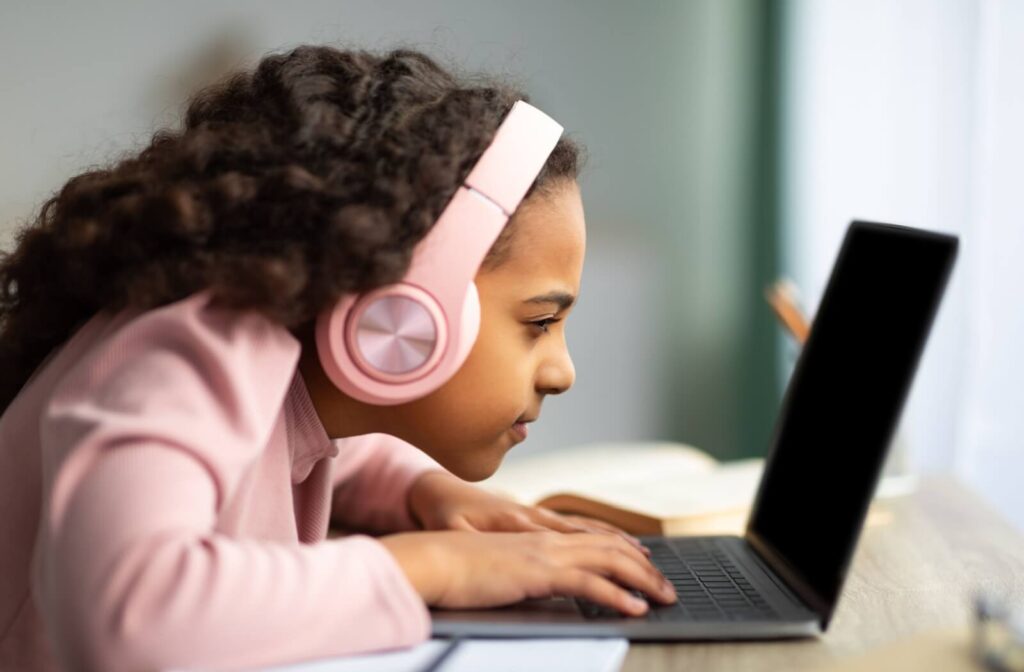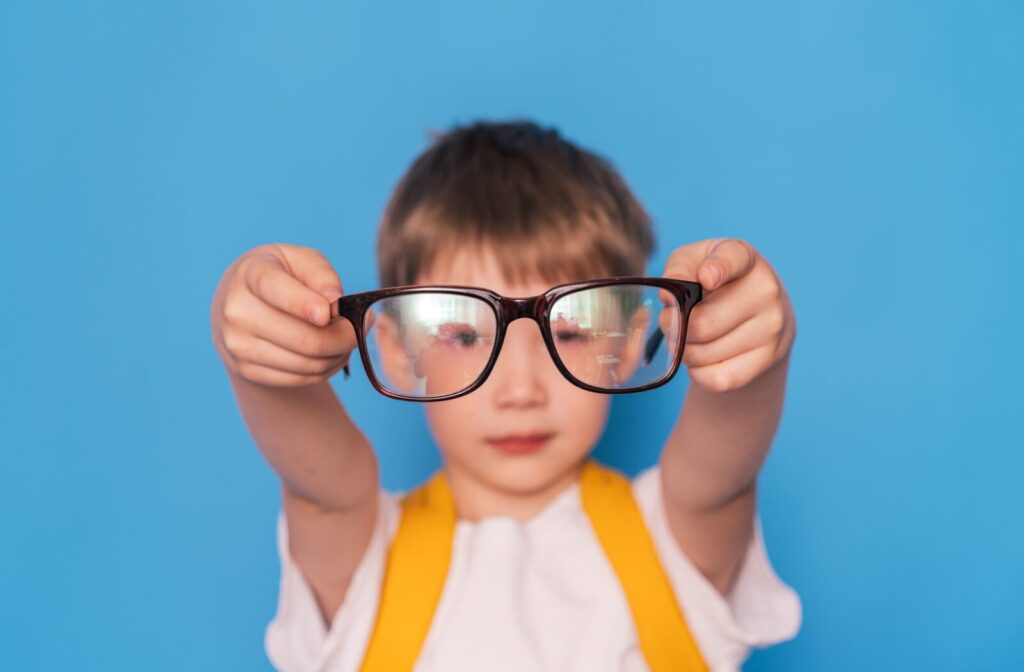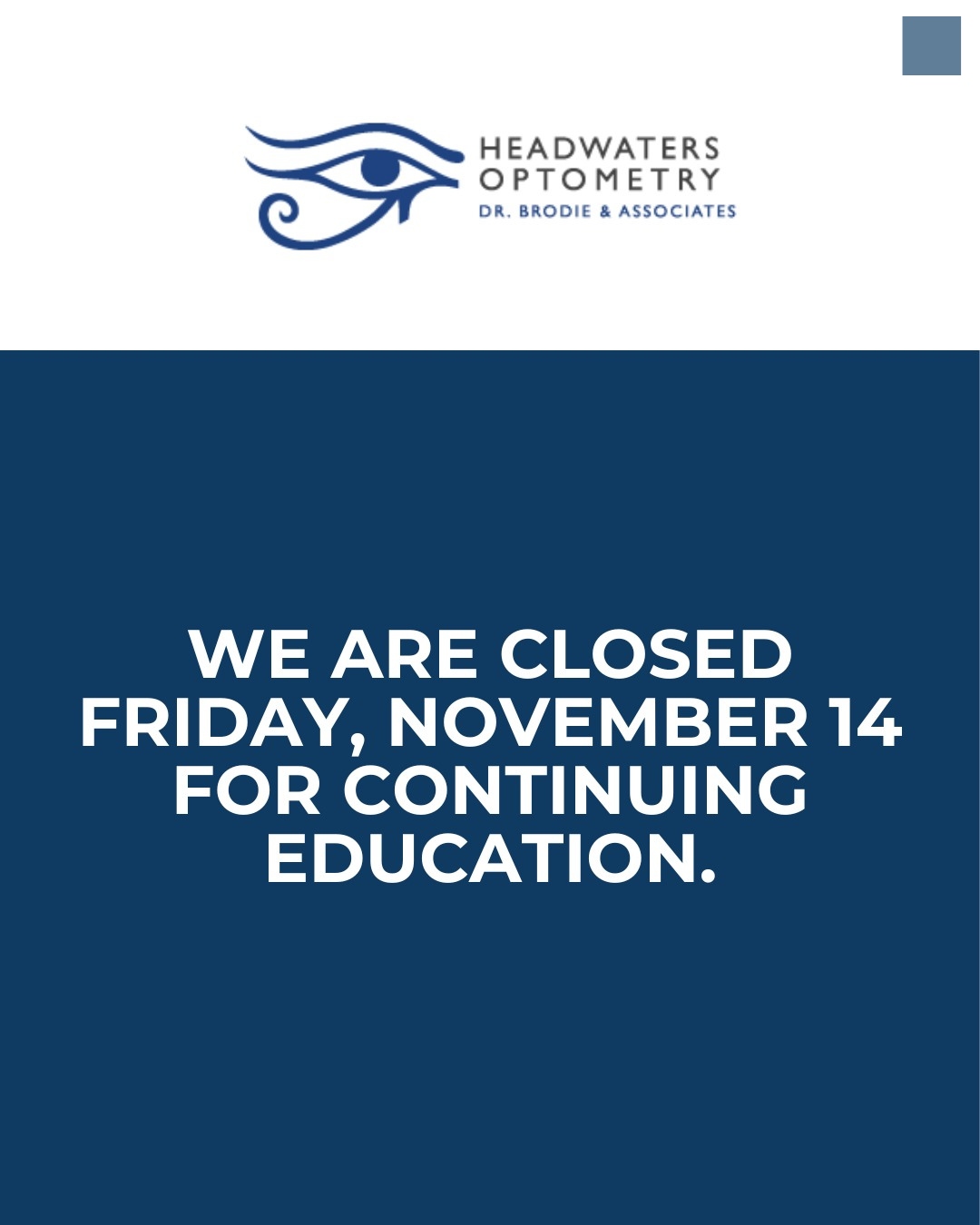As summer winds down and the back-to-school season approaches, parents often focus on school supplies, schedules, and healthy routines. But one important step can get overlooked: checking your child’s vision. Whether it’s reading instructions, copying notes from the board, or joining in on sports, clear eyesight plays a big role in how a child learns and participates.
Two of the most common vision issues in children are nearsightedness (myopia) and farsightedness (hyperopia). The key difference between them is that nearsightedness makes distant objects appear blurry, while farsightedness makes close-up objects blurry.
While both conditions affect how the eyes focus, they result in different challenges. Understanding the differences can help you spot early signs and take action before the school year begins.
What is Nearsightedness?
Nearsightedness, or myopia, is when a person sees close up objects clearly, but distant objects appear blurry. In the classroom, that might mean a child can read a book without trouble, but may struggle to see the whiteboard.
Myopia happens when the eye is too long or the cornea is too sharply curved, causing light to focus in front of the retina instead of directly on it. Myopia often develops during school years and can progress as a child grows. Possible signs of myopia in children include:
- Squinting to see faraway objects
- Sitting close to the TV or holding books very near
- Complaints about blurry vision when looking across the room
- Difficulty seeing the board at school
What is Farsightedness?
Farsightedness, or hyperopia, is when distant objects are easier to see than those up close. For a child, this could mean spotting a friend across the playground with ease, but struggling to focus on reading or close-up projects.
Hyperopia occurs when the eye is shorter than average or the cornea is flatter, causing light to focus behind the retina. Mild cases may go unnoticed, as children’s eyes can often compensate by working harder to focus. But higher levels of hyperopia can cause discomfort and make concentration difficult.
Possible signs of hyperopia in children include:
- Eye strain or headaches after reading or doing homework
- Trouble maintaining focus on near tasks
- Avoiding activities like colouring or puzzles
- Frequent eye rubbing
Myopia vs. Hyperopia
The easiest way to tell the two apart is by their effects on a person’s vision. With nearsightedness, nearby objects appear clear, but anything in the distance looks blurry. With farsightedness, distant objects are easier to see, while close-up details can be harder to focus on.
Both are refractive errors, meaning that they arise due to how the shape of the eye focuses light. They are not diseases, but without correction, both can impact school performance, comfort, and daily activities.
Recognizing Signs and Behaviours in Children

Children often don’t have the experience to realize that something is off with their vision, so they rarely say something is wrong. Instead, changes often show up in their behaviour.
Watch for symptoms such as:
- Squinting, tilting the head, or covering one eye to see better
- Sitting very close to screens or books
- Complaints of blurry vision, headaches, or tired eyes
Pay attention to behaviours like:
- Trouble staying focused during reading or lessons
- Avoiding tasks that require detailed vision
- Restlessness or distraction during class
- Declining grades or frustration with schoolwork
Sometimes, vision issues can be mistaken for learning or attention problems. For example, a child who can’t see the board might appear inattentive when they’re actually struggling to follow along visually.
Why Eye Exams Matter Before School
Beginning a school year with an undetected vision problem can be frustrating. Blurry or strained vision makes it harder to keep up with reading, class discussions, and sports. This can lead to missed lessons, reduced confidence, and even a reluctance to participate.
An annual eye exam can:
- Detect vision changes early, even before your child notices them
- Help prevent unnecessary struggles in learning and daily activities
- Identify other eye health concerns that could impact school performance
Clear, comfortable sight helps children stay engaged, confident, and able to enjoy every part of their school day. An eye exam before classes helps set your child up for success.
Supporting Healthy Vision in Children
While genetics influence eye health, lifestyle habits also play an important role. Here are steps that can support healthy vision:
- Encourage more outdoor time: Adding an extra hour outdoors each day can help reduce the risk of myopia in children. Outdoor light and looking at distant objects help relax the eyes.
- Limit screen exposure: Prolonged use of digital devices can lead to eye strain. Follow the 20-20-20 rule: every 20 minutes, look at something 20 feet away for 20 seconds.
- Promote healthy reading habits: Good lighting, proper posture, and regular breaks during close-up activities can reduce eye fatigue.
- Book regular eye exams: Routine check-ups help detect changes early and keep prescriptions current.
Helping Your Child See Clearly
Myopia and hyperopia are common, but they don’t have to limit a child’s learning or enjoyment. Spotting the signs and scheduling an eye exam before school starts may play an important role in supporting your child’s comfort, confidence, and engagement in the classroom.
At Headwaters Optometry, we take the time to understand your child’s unique vision needs and explain every step in a way that makes them feel comfortable. Our goal is to make every visit a positive experience for children and parents alike.
Contact us today to arrange your child’s back-to-school eye exam.




